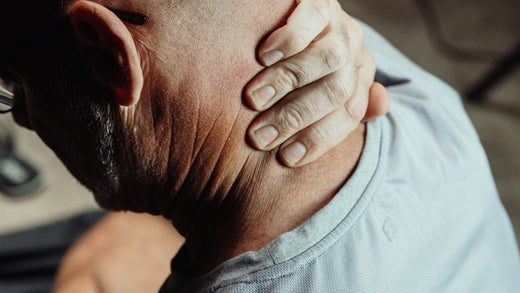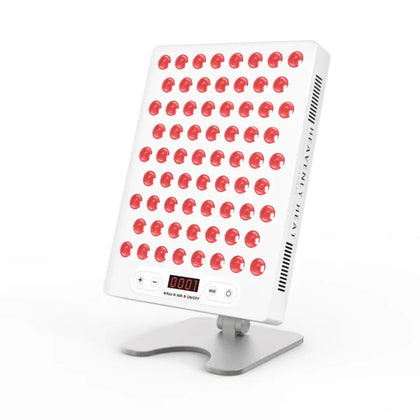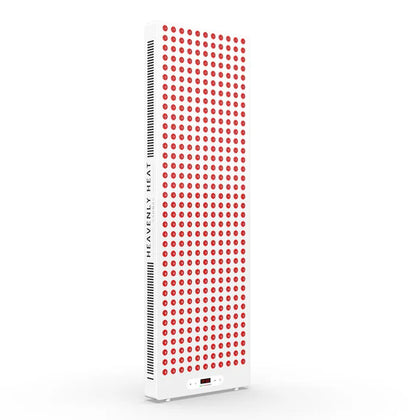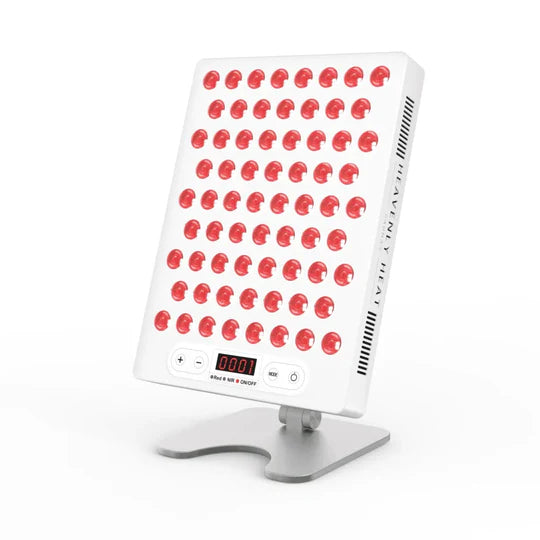How Red Light Therapy Helps Relieve Arthritis Symptoms?

Living with arthritis can feel like an endless battle. The constant pain, limited mobility, and the emotional toll it takes on your well-being can make daily tasks a challenge.
With 53.2 million adults in the U.S. suffering from arthritis, it’s no surprise that people are desperately seeking effective relief.
That’s where red light therapy comes in. This innovative treatment has been shown to reduce pain and inflammation, offering a promising solution for arthritis sufferers. Keep reading to discover how it could change your life!
What is arthritis, and what causes it?
- Arthritis makes your joints swollen and painful: Arthritis is a condition that causes inflammation in the joints, leading to pain, stiffness, and swelling.
- It can make simple daily tasks harder: It can make daily activities difficult, as the pain often limits movement and flexibility.
- There’s no full cure, but symptoms can be managed: Although arthritis is not fully curable, treatments like medications, physical therapy, and lifestyle changes can help manage symptoms and improve quality of life.
- Things like age, injury, or family history can lead to arthritis: The exact cause of arthritis is not always clear, but factors like genetics, age, and injury can contribute to its development.
- Medicines and, in some cases, surgery can help reduce pain: Some common treatments include pain relief medications, anti-inflammatory drugs, and in some cases, surgery.
The Science behind Red Light Therapy and Arthritis
Red light therapy is getting attention for how it may help people with arthritis. A 2019 review in Current Allergy and Asthma Reports looked at how this light therapy works.
It found that red light can calm down inflammation and help the body repair tissues, especially in the skin and joints.
That’s big news for arthritis, since inflammation causes a lot of the pain and stiffness. Unlike strong medications like steroids that can cause side effects, red light therapy is gentle, non-invasive, and easy to use, even at home.
The research still needs to figure out the best type of light and how much to use, but the results so far look promising.
For people with joint pain, red light therapy could become a safer, natural way to feel better without harsh drugs.
How Red Light Therapy Helps Relieve Arthritis Symptoms?
Pain Reduction
- Less pain means you can move more easily: Reducing pain is essential for managing arthritis, as it helps improve mobility and enhances daily life. When your joints hurt less, it becomes easier to walk, bend, and do everyday tasks.
- Red light helps reduce pain by calming inflammation: One study highlights that photobiomodulation therapy, using red and near-infrared light, reduces pain by decreasing inflammation and boosting cellular energy. This helps your body heal and feel better naturally.
- It also helps your joints heal by reducing stress inside the body: Another study shows that this therapy lowers oxidative stress, calms inflammatory markers, and promotes healing in musculoskeletal conditions like osteoarthritis and fibromyalgia. These benefits work together to reduce joint pain.
- You don’t need pills – this therapy is safe and painless: Unlike medications, it’s non-invasive and side-effect-free, offering a safe and effective solution for arthritis pain relief and improved quality of life. It’s a natural option without the risks of long-term drug use.
Improved Circulation and Healing
Improved circulation plays a key role in relieving arthritis symptoms by delivering more oxygen and nutrients to affected joints, reducing inflammation, and promoting healing.
A study found that red light therapy, specifically at 670 nm, can significantly improve circulation by increasing nitric oxide (NO) levels in blood vessels.
This boost in NO promotes vasodilation, or the widening of blood vessels, which enhances blood flow.
Anti-inflammatory Effects for Joint Relief
Red light therapy helps relieve arthritis symptoms by significantly reducing inflammation in the joints .
The therapy works by using red light to stimulate healing , reduce pain , and decrease swelling . It triggers natural processes in the body that lower harmful inflammatory markers , leading to less joint pain and improved mobility .
Enhanced Joint Mobility and Function
- Better joint movement makes daily life easier: Enhanced joint mobility and function are crucial for people suffering from arthritis, as they can significantly improve daily movement and reduce discomfort.
- Red light therapy helps joints move more freely: Red light therapy has shown promise in achieving improved mobility, especially for those with rheumatoid arthritis (RA) and osteoarthritis (OA).
- It works by reducing swelling inside the joints: According to a 2023 study , red light therapy reduces inflammation by using near-infrared light, which helps regulate cellular functions and promotes joint recovery.
- Less stiffness means easier movement without pain: This process enhances joint mobility and reduces stiffness, offering a non-invasive option to ease arthritis symptoms and improve quality of life.
How to prevent arthritis?
Maintain a Healthy Weight
Maintaining a healthy weight can help prevent arthritis and reduce stress on your joints, making it easier to manage symptoms.
A 2022 study highlights that weight loss is often recommended for knee and hip osteoarthritis, with approaches combining diet and exercise showing promising results.
Exercise Regularly
According to a 2011 study, properly designed aerobic and resistance exercises not only help reverse rheumatoid cachexia (muscle loss caused by rheumatoid arthritis) but also reduce joint pain, improve function, and lower cardiovascular risks.
Eat an Anti-Inflammatory Diet
- Eating the right foods can help prevent arthritis: Following an anti-inflammatory diet can reduce your risk of developing arthritis and ease symptoms if you already have it. What you eat plays a big role in how your joints feel.
- A diet full of natural, whole foods fights inflammation: The FEAST trial found that eating lots of fruits, vegetables, nuts, seeds, fish, and healthy oils like extra virgin olive oil can lower inflammation in the body.
- These foods are rich in nutrients that protect your joints: Foods in an anti-inflammatory diet give your body omega-3s, fiber, and antioxidants that help reduce joint pain and swelling.
- This kind of diet works better than low-fat diets: The study showed that anti-inflammatory diets are more effective and easier to stick with than traditional low-fat diets when it comes to managing arthritis.
- Cutting out junk food makes the diet work even better: To get the most benefit, it’s important to avoid processed and unhealthy foods that cause more inflammation.
Avoid Smoking and Excessive Alcohol
Avoiding smoking and drinking alcohol in moderation can help reduce your risk of rheumatoid arthritis (RA).
A Swedish study found that smoking increases the chances of developing RA, while moderate alcohol consumption can lower the risk by 30%.
The study also showed that alcohol might reduce some of the harmful effects of smoking on RA.
This means quitting smoking and being mindful of alcohol use could make a big difference in preventing arthritis and protecting your joints over time.













































